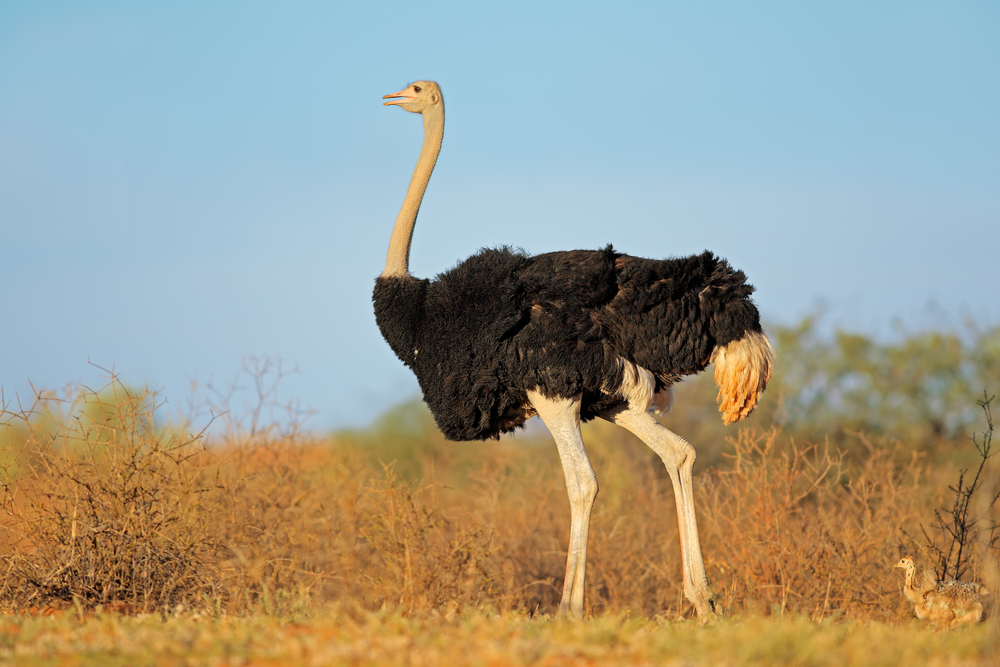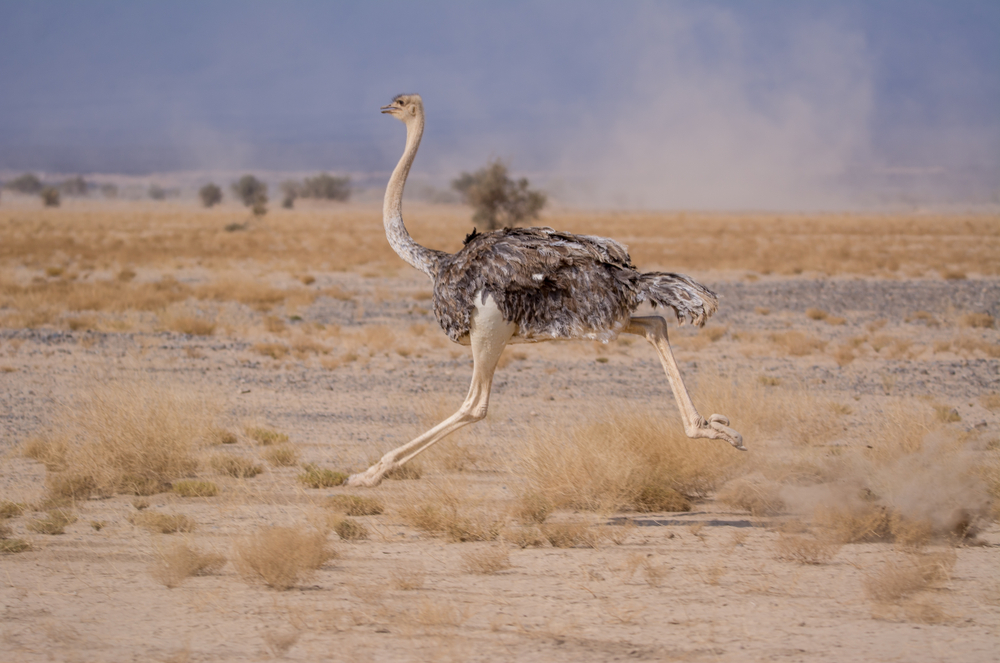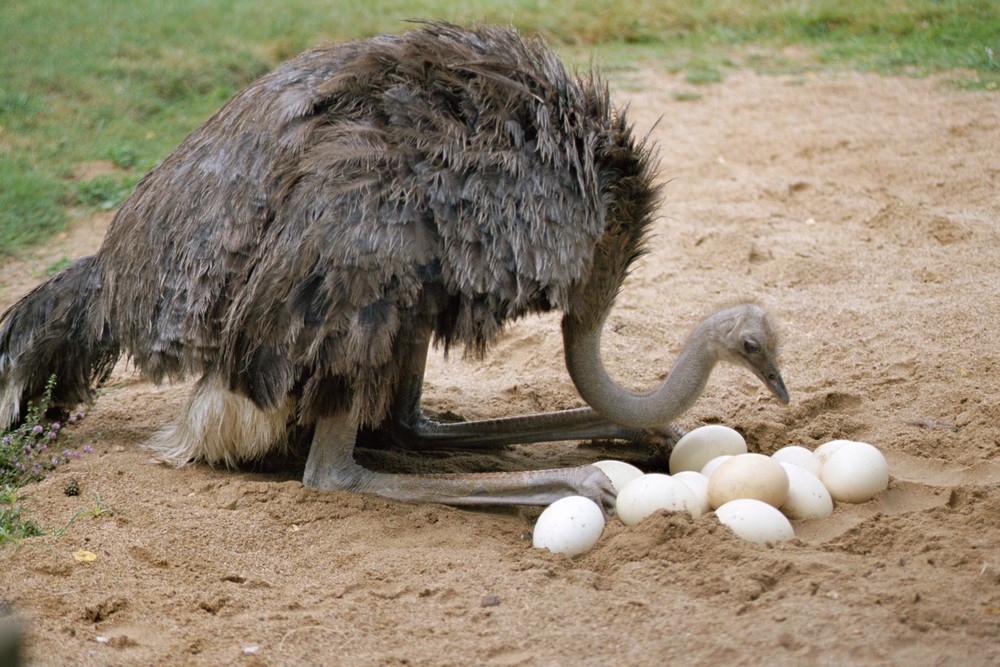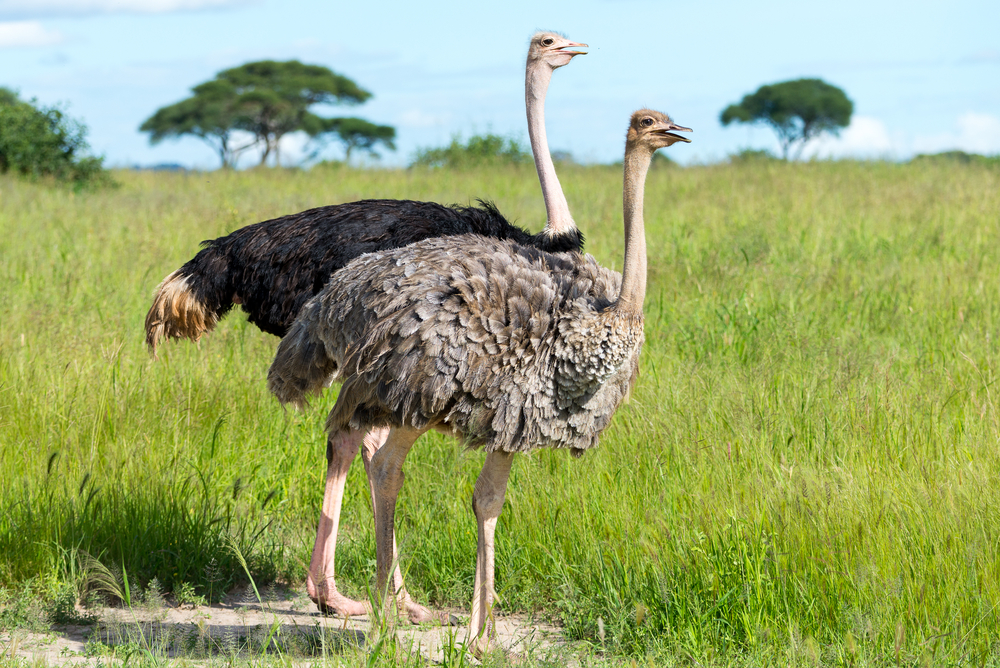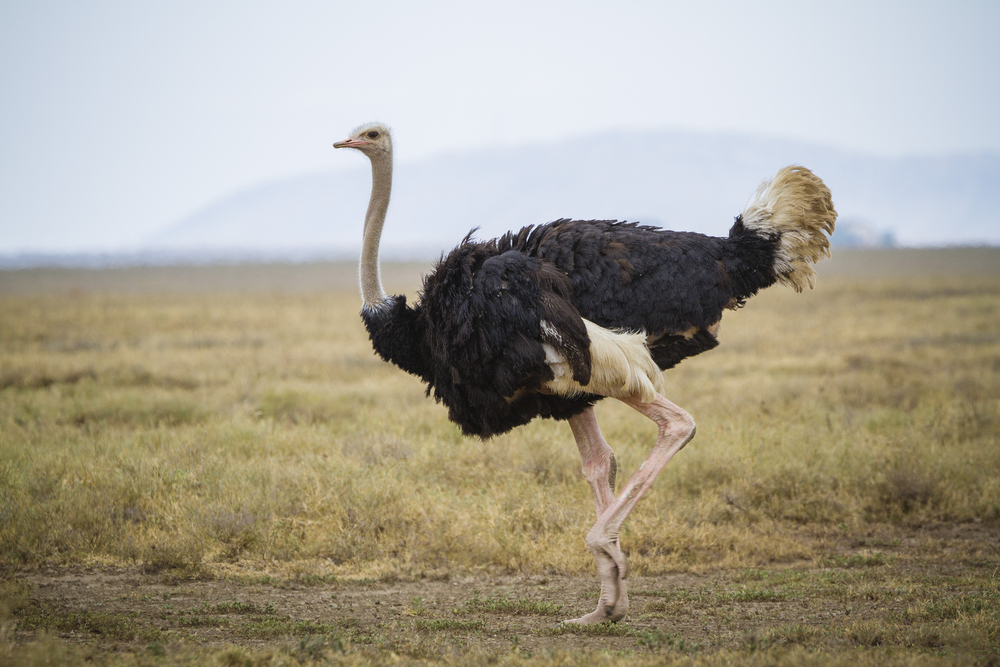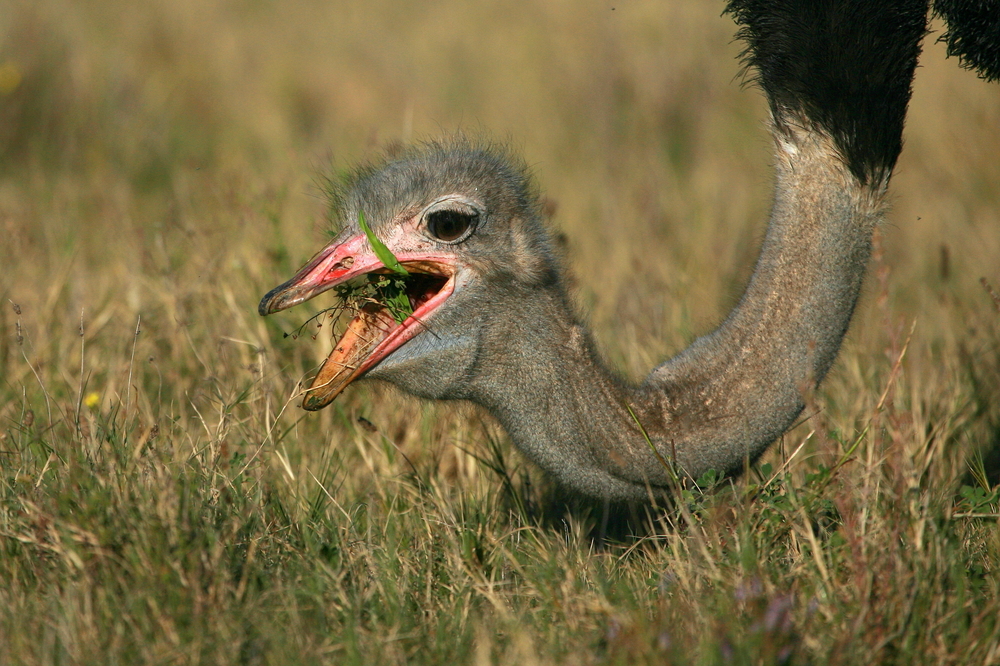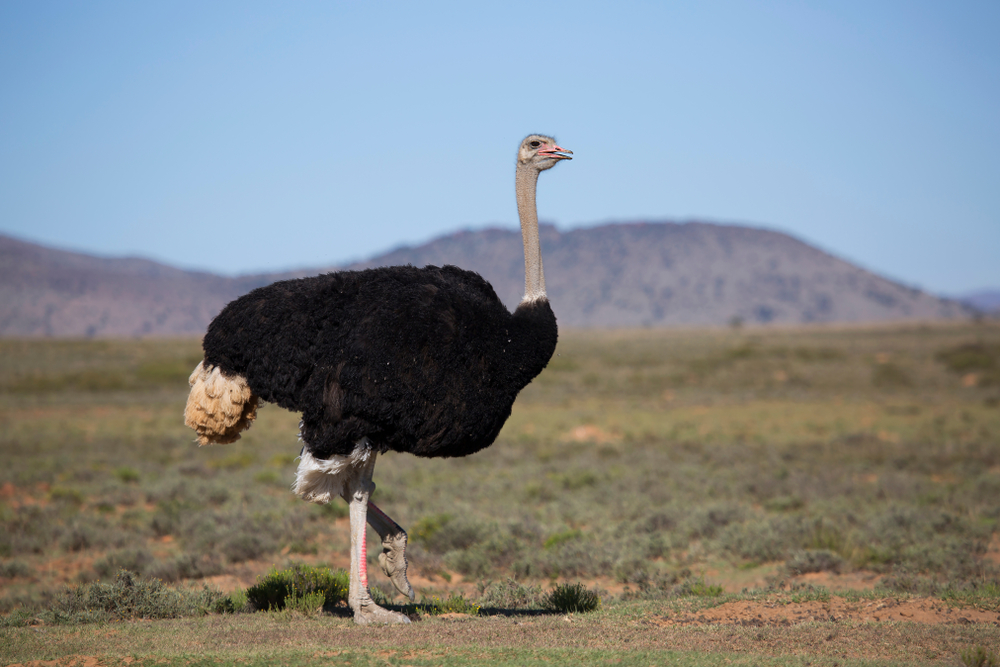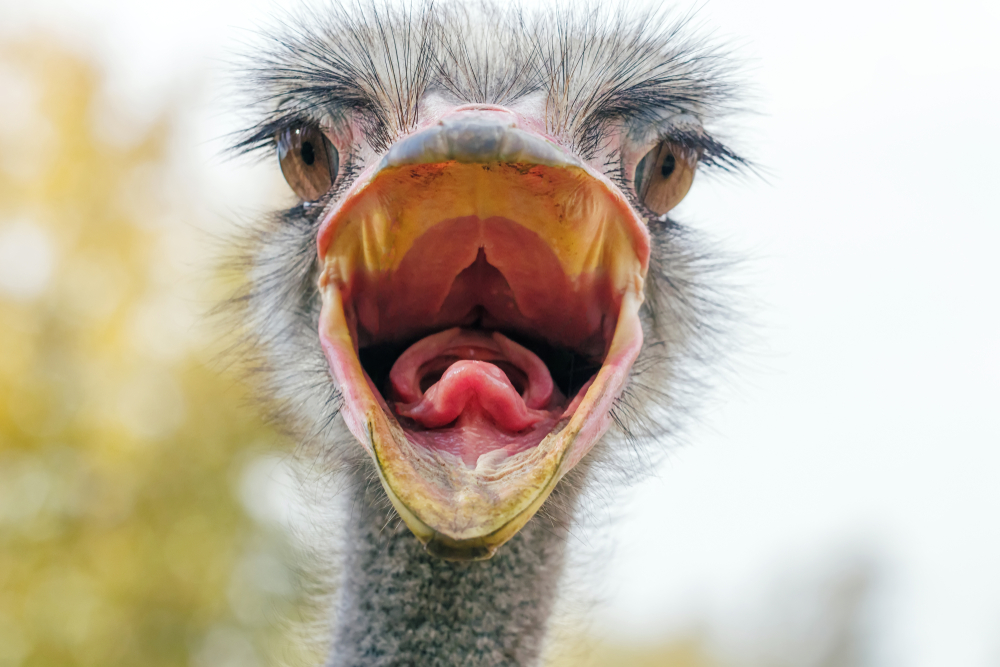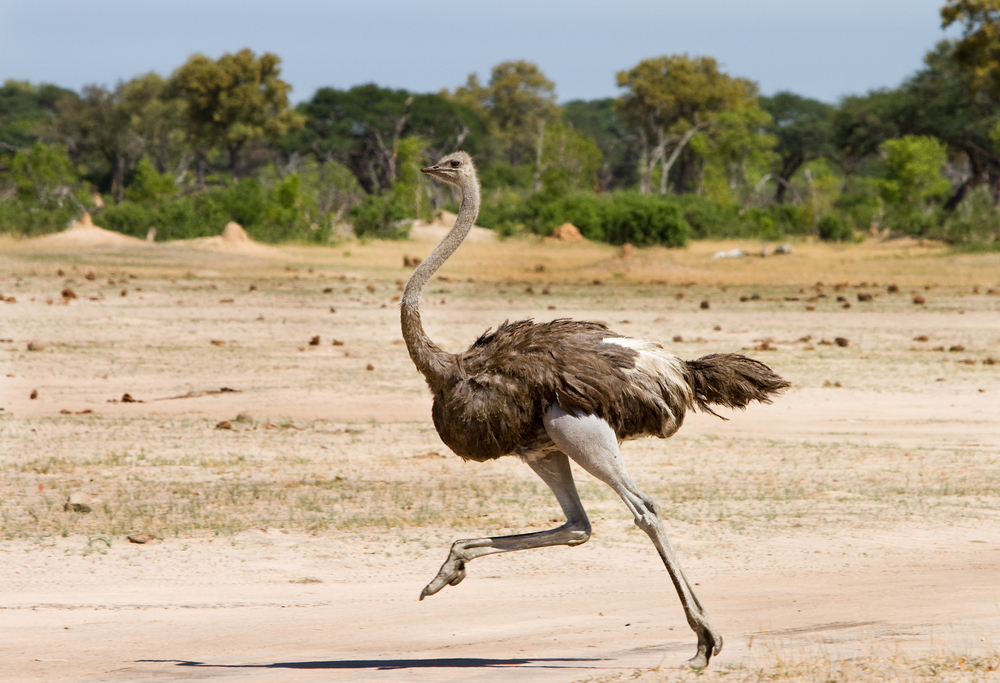About
#Aves
#Herbivore
The Ostrich, scientifically known as Struthio camelus, is the largest living bird species and belongs to the Animal Kingdom’s phylum Chordata and class Aves. It is a member of the Struthionidae family, which includes flightless birds like emus and cassowaries. Ostriches are native to Africa and are renowned for their remarkable adaptations.
These flightless birds have long necks, powerful legs, and distinctive, feathered bodies. They are well-known for their ability to run at speeds of up to 70 kilometers per hour, making them the fastest land birds. Ostriches have strong, muscular legs with two toes, enabling them to cover great distances in their arid savannah habitats.
Ostriches have large eyes and excellent vision, allowing them to detect predators from afar. They also have a keen sense of hearing and smell, further enhancing their ability to detect threats. Ostriches have unique plumage, with males featuring black feathers and females having brownish-gray plumage.
These birds are primarily herbivores, feeding on a diet of plants, seeds, and occasionally insects. They are well-adapted to survive in harsh desert environments, where they can endure extreme temperatures and limited water sources.
Conservation Concerns
Ostriches are currently listed as a species of “Least Concern” on the IUCN Red List, indicating that they are not facing significant threats to their survival. However, habitat loss, hunting, and disease outbreaks pose localized risks to ostrich populations in some regions.
Efforts to conserve ostrich populations include habitat protection, sustainable management of wild populations, and captive breeding programs. Continued monitoring and conservation initiatives are essential to ensure the long-term viability of ostrich populations and their ecosystems.
Threatened:
Extinct
Critically Endangered
Endangered
Vulnerable
Near Threatened
Least Concern



































































